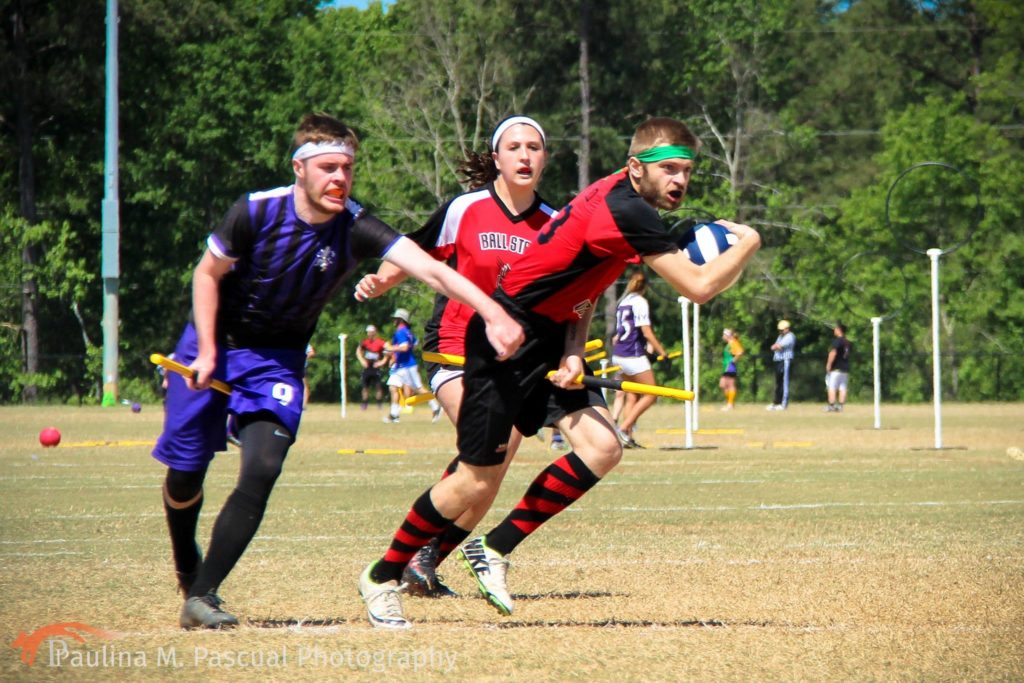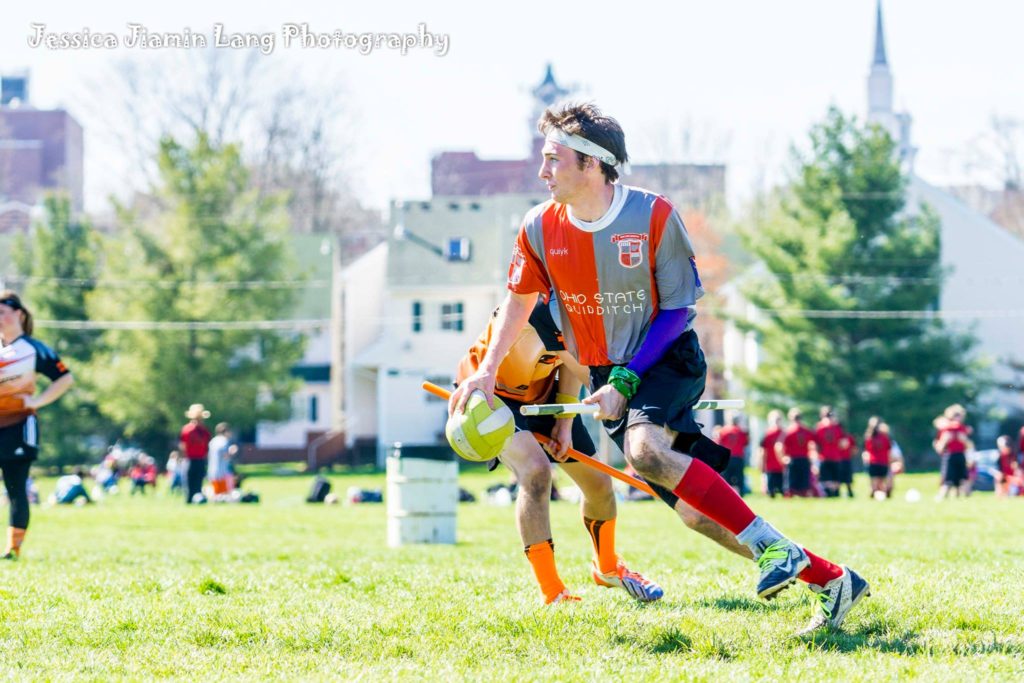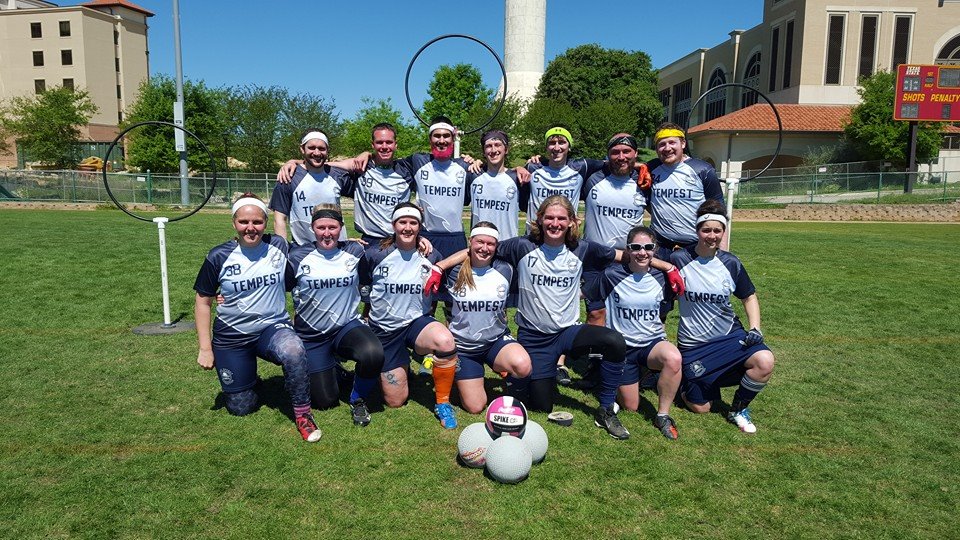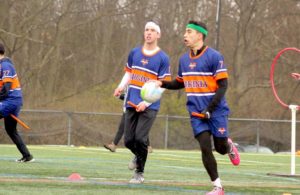- Rule, Britannia, no more?
- Unpopular Opinions: US Quadball Cup 2023
- Proven Contenders: University of Virginia
- Proven Contenders: Rutgers University
- Proven Contenders: University of Michigan
- Proven Contenders: Creighton University
- Different Perspectives: A Look Inside USA Ultimate
- Antwerp QC, Much of Belgian Core, Leaves Competitive Quidditch
Pick a Side: The Great Lakes
With a new season upon us, the staff of The Eighth Man got together and identified key storylines in each region. Staffers then were assigned a side in favor or against each statement. This is the second installment in our Pick a Side series: the Great Lakes.
Ball State Will Look Like an Elite Team Nationally
Against: Ethan Sturm – Managerial Editor
A year ago, Ball State University made a surprising run to the US Quidditch Cup 9 semifinals—but it’s a run that same roster probably couldn’t duplicate once in 10 tries. This season, Ball State returns with some key losses and if last year’s roster wouldn’t be able to repeat that historic run, there’s simply no way this year’s roster will.
Since the beginning of US Quidditch Cup 9, the Ball State core—which also makes up the core of the Indianapolis Intensity—have played 22 games, an incredible 18 of which have been in snitch range. Whether the opponent is good, average or bad, it doesn’t seem to matter: the Cardinals will play them in range. This strategy isn’t horrible when you have Tyler Walker defending Jason Bowling in the seeker game and, sure enough, Indianapolis and Ball State went 8-5 in the 13 in-range games where both players were on the roster. But that’s only a 62 percent win percentage, which is still basically a coin flip. Ball State’s weighted coin favored them at just the right times at US Quidditch Cup 9, sustaining the team’s deep bracket run, but also giving them the rather ugly Saturday loss to Rutgers University. The odds of that all happening in perfect order again are not all that high—just ask Bowling Green State University.

Credit: Paulina M Pascual
Not only are they likely to return to mediocrity—Ball State is also losing arguably the team’s two premier talents from last season: beater Tyler Walker and keeper Blake Fitzgerald. Walker is all but irreplaceable, and while you’re going to hear good things about Matthew Brown, the truth is no one has been able to step into the shoes of a Team USA-caliber beater and not miss a step. The position is too difficult, and the elite are too talented. Fitzgerald might arguably be more replaceable, but no one else on the team looks all that comfortable with the ball in their hands orchestrating the offense. It is going to be incredibly difficult for Ball State to score points this season, and while I’m sure they’ll keep many games low scoring for the opposition, that’s still just more coin flips.
Ball State will still be competitive in a weak Great Lakes region and still have all the makings of a Cinderella team. But a team that is built to succeed the way they do is susceptible to falling to literally every team they face, and a team like that can never earn a true “elite” label.
For: Austin Pitts – Midwest Correspondent
For a team that was highlighted by the phenomenal beater play of Team USA Walker and the fast-break prowess of Fitzgerald, losing both would seem to be a huge blow.
Not for Ball State.
While the Cardinals do have to bounce back from losing two of their best players, the roster they have is completely ready for the challenge. There are very few people in the entire world who could replace Walker on their own, and Ball State doesn’t plan on trying. Their roster is deep, evidenced by the fact that they would confidently sub in other beaters besides Walker throughout US Quidditch Cup 9 with next to no observable drop off, keeping Walker fresh and preventing long shifts. On top of that, Brown transitioned to beater this summer during MLQ and looks poised to translate his athleticism to Ball State’s bludger game.
In the quaffle game, Fitzgerald was a great fit for the fast-break system and orchestrated many goals for Ball State over the course of last season. Finding a replacement for Fitzgerald is as simple as looking at the player who stepped up when Fitzgerald broke his nose at nationals: Nick Kaufman.
Kaufman is another tall, lanky and fast keeper for Ball State who stepped right up when Fitzgerald was out and took command of the offense. Ball State loves to get up and run, and Kaufman is the perfect keeper to lead that charge.
With their style of play, Ball State is bound to play many snitch-range games. While the snitch has been described as nothing more than a coin toss, having Bowling as your seeker can make that coin seem weighted on one side. One of the best seekers in the country, Bowling has a freakish wingspan and is a fierce competitor, catching snitch after snitch to send both Ball State and Indianapolis Intensity to their respective semifinal matches. Despite losing some key pieces, Ball State’s depth and overall experience will overcome their personnel losses and set them up for yet another deep nationals run.
Chirp. Chirp.
Ohio State Will Find Itself in the Regional Title Match
Against: Eric Wasser – Great Lakes Correspondent
As a University of Michigan alumnus, this hurts to write, but I’m about to say a lot of nice things about Ohio State. Historically, they’ve had an exceptionally led team; were clearly focused on strategy in order to overcome their shortcomings in athleticism; and managed for two semesters to have the most internally dominant team the Great Lakes (and former Midwest) region has ever seen. It’s hard to find any real flaws historically for Ohio State. However, last season began their string of devastating losses to graduation.
In 2015, they managed to stumble their way into a regional semifinal, where they were quickly outclassed by Michigan, and failed to make bracket play at US Quidditch Cup 9. If these were the results accomplished last year, the losses of long-time star beater Julie Fritz and her partner, Matt Eveland, will leave gaping defensive holes that make even a regional semifinal seem improbable. Beyond this, they also lost Brien “Baby Beluga” Polivka, who was their most consistent seeker, tackler and scorer (when Jeremy Boettner was beating).

Credit: Jessica Lang
This year, they are focusing their recruiting heavily on athleticism—but the incomplete roster from last year being further depleted leaves their captaincy in quite the predicament. The two major players their team needs are going to be determined by Boettner’s choice of position. Should he choose to beat, they need a high-caliber distributor to enable the amazing goals we’ve seen time and time again from captain Chris Bowman, as well as a competent second and third string beater. Should Boettner play his strongest position, which may not be the best for the team, they would then have to field two rookie beaters capable of holding their own with the likes of Ball State, Bowling Green, Lake Erie Elite’s corps of Detroit Innovators and Central Michigan University with the re-addition of two-time Team USA beater Ashley Calhoun.
I’d put the odds heavily against Ohio State.
For: David Hoops – Great Lakes Correspondent
Author’s Note: What follows could potentially be viewed as one of the more biased pieces I’ve ever written, so take this with about 50,000 grains of salt.
Ohio State could absolutely find themselves in a regional championship match again this November, much sooner than anyone thought after their Midwest Regional Championship in 2014. Last season’s Buckeyes had some quality pieces still in place and had moments approaching national relevance, most notably an entertaining 110*-60 loss to Texas A&M University at US Quidditch Cup 9. Unfortunately, they also finished the season with a 15-17 official record and were largely unable to score consistently. So where does all this optimism for a regional championship run in two short months come from?
In short, Ohio State has lost the least amount of key pieces in the Great Lakes. The usual competition around them has considerably weakened: Michigan is missing the core of both their quaffle and beater games; Lake Effect Maelstrom imploded; and Bowling Green took a sizable hit from last season’s stellar beating contingent. I’m not completely sold yet on the return of Calhoun, David Prueter and David Wilber to Central Michigan being significant, as I’m concerned of a classic “too many cooks” problem that plagues new community teams. Lake Erie has too many holes on the roster. The door is open for someone to push against Ball State, and I think the Buckeyes are the most ready team to do so, with a fall regional not giving these other teams the time they need to develop their new talent.
Ohio State loses three key pieces from last year: keeper/seeker Polivka, and beaters Fritz and Eveland. Polivka was a workhorse last season and Ohio State’s most physical presence, but offensively struggled distributing in Ohio State’s spread-out passing game. As talented as Fritz and Eveland were, they each only played one semester, and the expected hole in their beating game was already filled when Boettner switched over from chaser. Quaffle players Bowman, Marisa DiMare, Jack Rawlinson and Gunnar Smyth are each on at least their third season together and have every tool needed to recreate the flowing passing system from the 2014 glory days. When you return 18 players from a nationals roster that could play the game the right way; had plugged most of its major holes by season’s end; are focusing early in the season on improving fundamentals and team strategies; and have Boettner on your team, I’m a firm believer that good things are coming your way.
Can Ohio State return to national relevance? I’m not sure, and, as of today, I would say no if pressed for an answer. But can they squeeze into a regional championship title match in a down year? Absolutely.
The Great Lakes Will be the Only Region Without a Community Team at Nationals
Against: Eric Wasser – Great Lakes Correspondent
I’m sure David Hoops and I are on the same page in believing Lake Effect Tempest is competitively dead for this season.
With only Lake Erie, an unproven community team, to represent graduates of the region competitively, things may look rough for the Great Lakes. However, Lake Erie looks poised to have an adequate fall season and a breakout spring. At Michigan State University’s unofficial tournament last weekend, Spartan Starting Rush, Lake Erie played two games with 13 players. With a roster composed of the Detroit Innovator’s top three male beaters (Jim Richert, Brandon Ollio and Brandon Gillespie) and no non-male beaters; two rookies; and no seeker, Lake Erie lost 100*-80 to a Central Michigan featuring Calhoun, Prueter and a guest appearance by Chris Barnard. The fact that such a veteran squad from Central Michigan never had a lead in quaffle points against the rag-tag squad Lake Erie produced says a lot about the defensive capabilities of the young community team. In their second game against a mercenary team that could appropriately be described as Indianapolis Intensity Light, Lake Erie went on a 50-0 scoring run with their second line. They lost the game 90*-60 but, again, proved they have the firepower to hang with most teams in the region.
The lack of dedicated seeker looks damning for Lake Erie. However, they are playing in a region that historically has a disproportionate amount of bids for the number of deserving teams they produce. Last year, not counting the finals, the two regional finalists played a combined one game in snitch range throughout the entirety of the regional championship tournament. With the inevitable addition of keeper Dylan Schepers and the possibility of more Michigan and Michigan State graduates joining the team out of convenience, this squad should have the offensive capabilities to be able to qualify for nationals without the need for a snitch catch.
For: David Hoops – Great Lakes Correspondent
For an undesirably retired player, this pains me to write.
I really want there to be a strong community team in the Great Lakes, a team that I can throw my support behind and say that they will be able to aspire for the heights of Rochester United, the Los Angeles Gambits or maybe just Florida’s Finest. Thinking of the available graduated talent in the region, it’s not too hard to construct a roster from our region’s MLQ teams that can compete for a top 10 national ranking. Lake Erie and Tempest theoretically have more than enough talent available to both to secure qualification to this year’s nationals. Unfortunately, theory and reality just aren’t matching up.
Tempest almost qualified last season but missed out with a heart-breaking overtime loss to Indiana University at the Great Lakes Regional Championship. Lake Erie, a new team based along the Ohio/Michigan border, is making a more concerted effort at practicing consistently and maximizing winning over playing time. However, both teams have some pretty gaping flaws that will not only keep them out of the big picture in USQ, but might keep both from even attending US Quidditch Cup 10.
Starting with the obvious, Tempest did not qualify last year, which was the result of the struggle to produce the needed athleticism to compete at a national level. Some of the team’s best offensive pieces have been stolen away by Lake Erie (Matt Dwyer, Krystina Packard) or moved across the country (Alex Scheer)—and for a team that only scored more than 10 goals twice all of last season, I’m not convinced the addition of Devon McCoy can get them there.

Courtesy: Krystina Packard
Lake Erie has a much better chance and has some great pieces on paper. Dylan Schepers and and a the potential addition of Barnard alone make Lake Erie one of the most physical teams in the region, especially on offense. Richert gets a chance to shine by leading the beating game. Packard, when healthy and assuming she plays, is one of the best female chasers in the region. The problem for Lake Erie is depth and cohesion. This is a brand new team, and there’s always growing pains from trying to figure out the right way to make the pieces fit. There are only four beaters on the roster, three of them male. Missing out on the trio of Calhoun, Prueter and Wilber to Central Michigan isn’t just a talent loss. I don’t know if Lake Erie can consistently produce anything close to a 21-person roster. Schepers and Barnard are some of the best tools in the game given a no-beater situation, but neither are particularly known for any sort of distribution skills. For a team that will likely have to slow the pace of the game because of a lack of subs, the final hole for Lake Erie is their seeking game.
Schepers and Richert are the only things resembling a seeker on the roster, and both are going to be needed desperately in the chasing and beating games in a snitch-range game. Although much has been said about the unfair advantage of community teams, don’t be shocked to see the Great Lakes send an all college lineup to nationals.



